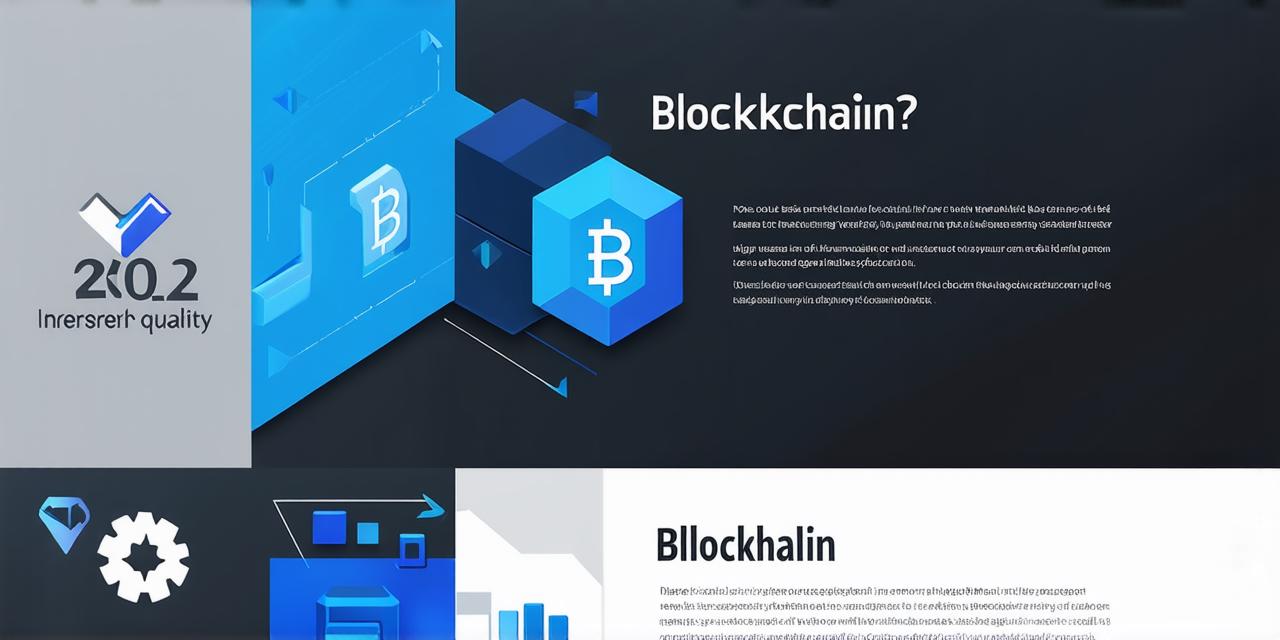Blockchain technology has been around for over a decade now and its potential applications are endless. It is a decentralized ledger that records transactions in a secure and transparent manner, eliminating the need for intermediaries such as banks or governments to verify the authenticity of transactions.
What is Blockchain?
Blockchain is a distributed ledger that records transactions in a secure and transparent manner. It was first introduced by Satoshi Nakamoto in 2008 as the underlying technology for Bitcoin, but it has since been used for various other applications such as supply chain management, identity verification, and voting systems. The core concept of blockchain is that it is decentralized, meaning that there is no central authority controlling the network. Instead, transactions are validated by a network of computers, each of which stores a copy of the ledger.
How does Blockchain work?
Blockchain works through a process called mining, where computers compete to solve complex mathematical problems in order to validate transactions and add them to the ledger. Once a transaction is validated, it is added to a block, which contains multiple transactions. The block is then verified by the network of computers and added to the chain of blocks, forming a permanent record of all transactions on the network.
One of the key features of blockchain is its immutability, meaning that once a transaction is recorded on the ledger, it cannot be altered or deleted. This makes it an ideal solution for applications where transparency and security are paramount, such as in supply chain management or identity verification.
Potential uses of Blockchain
Blockchain technology has the potential to revolutionize many industries, including finance, healthcare, and real estate. In finance, blockchain can be used to streamline cross-border payments, reduce fraud, and increase efficiency. In healthcare, it can be used to securely store patient data and prevent identity theft. In real estate, it can be used to create a decentralized marketplace for buying and selling properties, eliminating the need for intermediaries such as real estate agents.
Real-life examples of Blockchain
There are already several real-life examples of blockchain being used in various industries. In finance, banks such as Goldman Sachs and JPMorgan Chase have been exploring the use of blockchain for cross-border payments and settlements. In healthcare, companies such as MediLedger are using blockchain to securely store patient data and prevent identity theft. In real estate, companies such as Provenance are using blockchain to create a decentralized marketplace for buying and selling properties.
FAQs
1. What is the difference between blockchain and Bitcoin?
Blockchain is the underlying technology that allows transactions to be recorded in a secure and transparent manner, while Bitcoin is one of the first applications of blockchain technology as a digital currency.
2. Is blockchain secure?
Yes, blockchain is secure because it is decentralized, meaning that there is no central authority controlling the network. Transactions are validated by a network of computers, each of which stores a copy of the ledger. This makes it difficult for hackers to compromise the network.
3. What are some potential uses of blockchain?
Blockchain technology has the potential to revolutionize many industries, including finance, healthcare, and real estate. In finance, it can be used to streamline cross-border payments, reduce fraud, and increase efficiency. In healthcare, it can be used to securely store patient data and prevent identity theft. In real estate, it can be used to create a decentralized marketplace for buying and selling properties, eliminating the need for intermediaries such as real estate agents.

